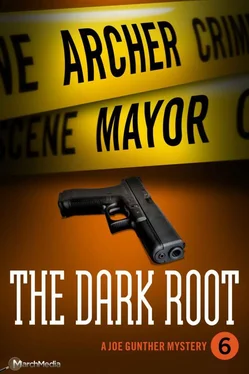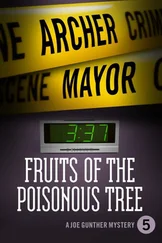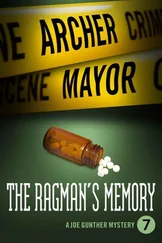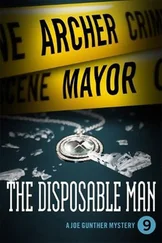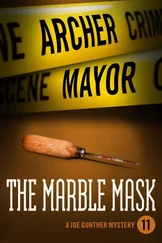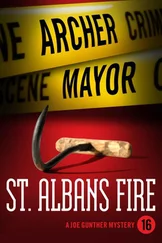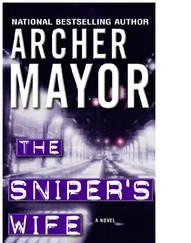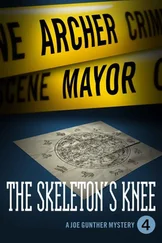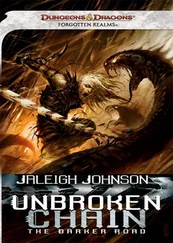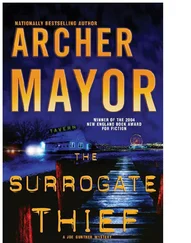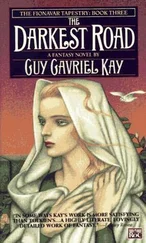Archer Mayor - The Dark Root
Здесь есть возможность читать онлайн «Archer Mayor - The Dark Root» весь текст электронной книги совершенно бесплатно (целиком полную версию без сокращений). В некоторых случаях можно слушать аудио, скачать через торрент в формате fb2 и присутствует краткое содержание. Год выпуска: 1995, ISBN: 1995, Издательство: MarchMedia, Жанр: Полицейский детектив, на английском языке. Описание произведения, (предисловие) а так же отзывы посетителей доступны на портале библиотеки ЛибКат.
- Название:The Dark Root
- Автор:
- Издательство:MarchMedia
- Жанр:
- Год:1995
- ISBN:9781939767066
- Рейтинг книги:5 / 5. Голосов: 1
-
Избранное:Добавить в избранное
- Отзывы:
-
Ваша оценка:
- 100
- 1
- 2
- 3
- 4
- 5
The Dark Root: краткое содержание, описание и аннотация
Предлагаем к чтению аннотацию, описание, краткое содержание или предисловие (зависит от того, что написал сам автор книги «The Dark Root»). Если вы не нашли необходимую информацию о книге — напишите в комментариях, мы постараемся отыскать её.
The Dark Root — читать онлайн бесплатно полную книгу (весь текст) целиком
Ниже представлен текст книги, разбитый по страницам. Система сохранения места последней прочитанной страницы, позволяет с удобством читать онлайн бесплатно книгу «The Dark Root», без необходимости каждый раз заново искать на чём Вы остановились. Поставьте закладку, и сможете в любой момент перейти на страницу, на которой закончили чтение.
Интервал:
Закладка:
It had been his train pulling in, and as I reached the bottom step, I could hear a series of warning beeps going off overhead, telling me the doors were about to close. Choosing the risk that he might see me over the certainty that I’d lose him otherwise, I ran to slip in between the doors just before they hissed shut.
I was alone in the car.
I tried to orient myself in relation to the city above. We were heading east, and according to the Metro map mounted on the car’s wall, we were on the Orange Line, or the Côte Vertu/Henri Bourassa Line. Our next stop would be Champs Mars. Even as I figured that out, I could feel the train’s momentum ebbing, and an incomprehensible announcement in French came over the loudspeakers. I moved across the aisle and crouched next to the sliding door. As I waited, I pulled my Swiss Army knife from my pocket and unfolded one of its blades, hoping to hell no one would be standing on the platform with plans of using this particular door.
The train entered a brightly lit, totally empty station, and came to a gradual, smooth stop. The doors slid open, and I immediately poked the end of the blade out past the threshold, using its shiny surface as a mirror to watch the platform ahead of me, while I flattened my head against the car’s interior wall to obliquely watch the area to the rear of the train. No one appeared on the platform. A minute later the doors closed, and we pulled out again.
The next station was Berri-UQAM, a junction of three separate lines, heading off in different directions-and a perfect place for things to get complicated.
As we pulled in, seeing that a few predawn commuters were sprinkled along the platform, I changed tactics slightly. I stood by the door, and when it opened, I ducked my head out a couple of times as people brushed by me. As the warning beeps sounded, I saw Truong exit from two cars up and cut across the platform into a wide, arched hallway. I slipped free of the train just before the doors closed and flattened myself against the station wall. Risking a quick glance around the corner, I saw Truong’s back receding down a flight of stairs to the right.
As he disappeared from view, I moved cautiously to the top of the stairs and then waited until he’d vanished along a lower-level passageway. About halfway down the stairs after him, suddenly troubled by the sounds of my shoes, I took them off, shoving them into my jacket pockets.
Truong continued on through an intersection with another pedestrian walkway and committed himself to a passage marked Longueuil.
From my earlier reading of the Metro map, I remembered Longueuil as being on the south shore of the Saint Lawrence, a neighboring district of Brossard where, days earlier, Lacoste had shown Spinney and me the residential highlights of the Asian community. I began to imagine where Truong might be heading.
I followed him down yet another set of stairs, this one ending in a rough cement, low-ceilinged, gray station, a dingy imitation of its bright vaulted counterpart two flights up.
There I found myself in a bit of a squeeze. I could see Truong-whom I identified with certainty now-standing nervously by the edge of the platform, but I was worried that another prospective passenger might come up behind me and wonder why I was lurking in the entrance tunnel.
Predictably, I immediately heard footsteps clattering on the cement steps behind me. As an older man came into view, I crouched down and innocently began tying the laces to the shoes I’d just put back on. He walked by me without a glance.
Truong studied the man carefully and then abandoned his exposed position by the platform’s edge, opting for the safety of a bench located in one of the alcoves lining the concrete wall. This gave me a sudden double advantage-I could vacate the exposed passageway and secret myself instead in another of the alcoves, far from Truong’s.
As I moved, I noticed a bright-red sign along the station’s wall, labeled S.O.S. It was suspended over a red phone and a small fire extinguisher, both mounted inside a cabinet. I hoped our final destination would have an equally visible phone I could use to call the police-and that I’d have the opportunity to do so.
Another clean, quiet, rubber-wheeled blue train rushed into the station. Truong crossed the platform, getting on near the front. I boarded last, watching that Truong didn’t reverse himself at the last second. He didn’t.
According to the map, there were only two remaining stops ahead-Ile-Ste-Hélène, and the terminus, Longueuil. Ile-Ste-Hélène was one of the two islands in the middle of the Saint Lawrence that had been used in the Expo ’67 fair, almost thirty years earlier. The whole of Ile-Notre-Dame just beyond it, I remembered, had been created especially for the event, and now was home to the city’s highly lucrative casino-which made me wonder if that might be Truong’s destination.
Truong got off at Ile-Ste-Hélène, and quickly vanished into the exit tunnel.
Swearing at his sudden speed, I ran for the red S.O.S. phone and hurriedly told the operator, “This is a police emergency. Please contact Jean-Pierre Lacoste of the MUC or Jacques Lucas of the RCMP and tell them that Truong, the man they’re after, just got off the Metro at Ile-Ste-Hélène. Tell them that Joe Gunther is in pursuit and needs help fast. Got it?”
“This is who?” came the startled reply.
“Shit,” I muttered, hanging up and taking the steps two at a time, worried now that even if they did get the message, I wouldn’t be able to tell them what direction Truong had taken.
I slowed at the top of the stairs-on the chance he might be waiting in the lobby-but the place was empty. I ran to the bank of glass doors and out to a large, empty parking lot, blinking to adjust to the darkness, now just tinged with gray on the eastern horizon.
My environment was a startling transformation from where I’d disappeared underground just twenty-five minutes earlier. I was standing in the midst of a strange other world, highlighted by exotic and contrasting icons-a dark and gloomy forest to my back, just beyond an old, monastery-style building on the edge of a huge, empty, soiled swimming pool; the looming, twenty-story-tall Buckminster Fuller geodesic dome, glowing like a skinless golf ball with indirect interior lighting; and beyond it, in the far distance, the Montreal Casino on the other island-the old ’67 French Pavilion-ablaze with light, looking like some oversized geometric mobile that had been cut loose and dropped to the earth in a heap. In the darkness, the whole area seemed like a dumping ground for Montreal’s rejected monuments.
Most impressive, however, was that it was all utterly abandoned. I heard no sounds, saw no signs of life-and could see no trace of Truong.
I moved away from the Metro building, toward the huge dome, and came to a junction of pedestrian footpaths. There I heard the smallest scrape of a foot against pavement, far to the left, in the gloom skirting the edge of the monastery by the swimming pool. Again, I pulled off my shoes and began jogging in the same direction.
Beyond the building, the darkness became near absolute. Before me was a low, wooded hill, part of a park crisscrossed with paved walkways, its details discernible only against the distant, feeble glow of the city across the wide river-the flashing Molson sign, the string of lights outlining the Jacques Cartier bridge. The slight sound that had lured me here slowly lost its serendipity, and began to feel more like part of an elaborate trap. I stood absolutely still, a rabbit caught in a pair of metaphorical headlights, wondering from which direction an attack might come.
Until I heard the sound again.
It came from up ahead, across the narrow road that went by the monastery’s front entrance, deeper in the park. Running silently toward the sound, I gave chase.
Читать дальшеИнтервал:
Закладка:
Похожие книги на «The Dark Root»
Представляем Вашему вниманию похожие книги на «The Dark Root» списком для выбора. Мы отобрали схожую по названию и смыслу литературу в надежде предоставить читателям больше вариантов отыскать новые, интересные, ещё непрочитанные произведения.
Обсуждение, отзывы о книге «The Dark Root» и просто собственные мнения читателей. Оставьте ваши комментарии, напишите, что Вы думаете о произведении, его смысле или главных героях. Укажите что конкретно понравилось, а что нет, и почему Вы так считаете.
